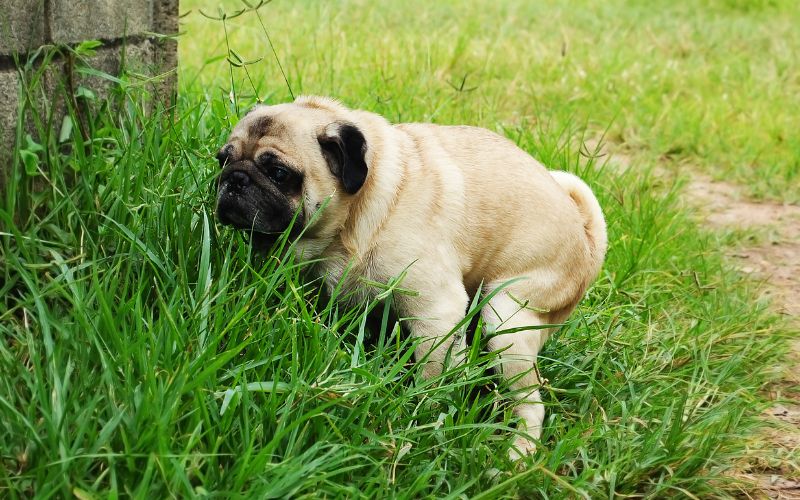When the temperature is plummeting and there’s a nip to the breeze, it’s time to pile on the layers and snuggle up by the fire. But remember if you’re feeling the winter chill, you can guarantee your four-legged friend is too.
Sometimes it can be tricky to know what our dogs are thinking or feeling, as they don’t have the words to tell us.
So, how do you know when your dog is cold?
Dogs may exhibit a range of behaviours when the cold weather is affecting their wellbeing. Look out for:
- Trembling or shivering
- Whining
- Seeking out heaters or warm spaces (such as your bed)
- Curling up into a small ball or tucking in their tail
- Avoiding cold tiles/flooring
- Changes in behaviour, such as anxiety
- Reluctance to walk forward when outside
Of course, every breed is different, meaning some dogs will feel the cold more than others. Breeds with short coats, no undercoat, low body fat and/or short legs - such as Greyhounds, German Shorthaired Pointers, Boxers and Chihuahuas - will generally be less tolerant of cold weather.
On the other hand, breeds with thick fur, double coats or dense undercoats have evolved to adapt to the conditions of their native cold climates, such as Siberian Huskies, Bernese Mountain Dogs and Saint Bernards.
If you’re thinking about welcoming a new dog into your family, it’s a good idea to consider which breed is best suited to your local climate, as this will heavily influence your dog’s general wellbeing and comfort levels.

The impact of cold weather on dogs
When your dog is exposed to cold weather, it can cause lethargy, lead to low mood and aggravate existing health conditions - especially in senior dogs.
Additionally, researchers from the University of Pennsylvania School of Veterinary Medicine discovered that diabetes diagnoses in dogs were more likely to occur in the winter. Possibly due to how the body processes vitamin D or insulin.
As you can see, it’s especially important to nurture your pup’s health when the temperature drops.
Read on to find out how to keep your dog warm and safe this winter. You’ll learn about joint care for dogs, healthy dog food in winter and staying active during a cold snap.
How to create a warm space for your canine companion
There’s no better feeling than snuggling into a cosy bed on a cold winter night. Unsurprisingly, dogs share our desire for warmth and comfort; they love snuggling on a winter night too!
A warm space is especially important if your dog spends a lot of time outside. In which case, an elevated bed helps to protect them from the chill on the ground, while a kennel or enclosure shelters them from the rain, wind and frost.
You can even buy self-warming beds and microwaveable pads/pillows. Just be sure that the temperature is safe and tolerable before giving them to your pet.

Winter diets: what is the most healthy food for dogs?
We tend to adapt our own diets when the winter arrives, favouring warm, hearty foods like soups and casseroles.
When you implement a homemade dog diet and feed your dog real food, you acquire the freedom to adapt their diet based on the season, their specific breed and individual sensitivities.
Try a delicious chicken/turkey/duck hotpot cooked in chicken broth, featuring tasty warming vegetables, such as pumpkin, sweet potato, zucchini and parsnip.
During the winter, it is particularly important to consider micronutrients. But how can you be sure that your dog is receiving the vitamins and minerals they need?
To remove the guesswork, Wellbeing Essentials Complete 22 was developed in conjunction with vets and food scientists to address these very concerns. It provides dogs with the key dietary nutrients that are vital for winter wellbeing in just one tasty spoonful. Add it to your dog’s warming winter meals for complete peace of mind.
Keen to get started but don’t know where to begin? Download our free eBook for tips, recipes and information on incorporating real food into your dog’s winter diet.
Why winter walks matter for healthy hounds
During the winter, when it’s dark and cold, it’s tempting to abandon your dog’s favourite long walks for shorter trots round the block. But the consequence of this is that there’s a greater chance of your dog piling on the pounds and also feeling a little bored. And who can blame them?
So, how can you keep your dog warm and still enjoy lengthy winter strolls?
However, it’s still important to be mindful of the temperature. Long walks are best avoided when the mercury drops below 4°C. This can pose considerable health risks for your pup, especially when the ground is icy and their paws, nose, tail and ears are exposed.
A jumper or jacket is perhaps the easiest way of protecting your dog from the cold, if they are tolerant of clothing. Ensure a correct fit, avoid items that may irritate or restrict your dog’s movement, and be mindful of zippers and buttons that can pose a choking hazard.
Last but not least, if your dog gets wet from splashing in puddles or running through the snow, dry them off with a towel or hair dryer. Even better, snuggle up on the sofa together to share that body heat!

Senior dog care: wellbeing essentials for winter
Cold temperatures can be especially hard on senior dogs, aggravating degenerative joint issues such as arthritis. In fact, it’s estimated that up to 80% of dogs have arthritis by the time they reach eight years of age.
So, what can you do to keep your senior dog healthy during winter?
A slightly elevated or orthopaedic bed is also beneficial, protecting them from drafts and hard floors, which can cause discomfort.
We’ve all heard the saying ‘food is the best medicine’ and this certainly applies to senior dogs. Supplementation is an excellent idea to ensure they are receiving the vitamins, minerals, essential fatty acids and powerful antioxidants they need.
Naturally anti-inflammatory are shown to improve joint stiffness with its list of 22 all-natural ingredients, Wellbeing Essentials Complete 22 is a great source of nutrients for your senior dog. It provides complete peace of mind in helping to boost your dog’s health and vitality.
All it takes is a little extra TLC, to ensure your senior dog can enjoy a safe and comfortable winter.
In Conclusion
Winters don’t need to be daunting for dogs or their owners. Take extra measures to keep them warm, adapt their food as the temperature drops, incorporate supplements into their diet and enjoy appropriate activity to keep them healthy and happy.
Keen to introduce a real food diet this winter? Download our free eBook for all the tips and information you need to get started.




